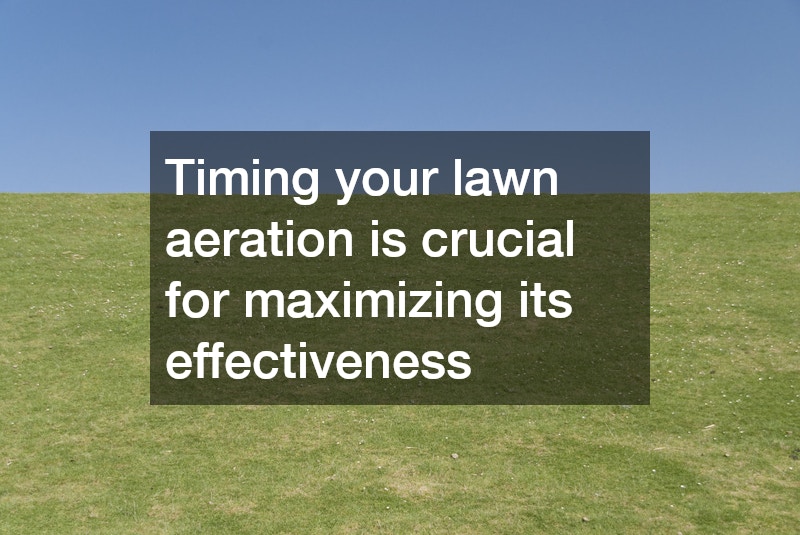The art and science of lawn aeration balances aesthetics with environmental benefits. This guide walks you through the intricacies of maintaining a healthy lawn through effective aeration. By understanding the process and principles of lawn aeration, you can significantly enhance the overall vitality of your lawn.
Why is Lawn Aeration Important?
Understanding Soil Compaction
Soil compaction occurs when soil particles are pressed together, reducing the pore space between them. This often happens due to foot traffic, heavy machinery, or natural settling of the soil. When the soil becomes compacted, it restricts root growth and reduces the soil’s ability to absorb water and nutrients, which can adversely affect lawn health.
Compacted soil creates a poor environment for grass roots to thrive. Without proper aeration, the compacted soil layers can suffocate the roots, leading to weak and unhealthy grass. Aeration helps break up compacted layers, allowing the roots to access the nutrients and water they need to grow strong and healthy.
Lawn aeration alleviates soil compaction by creating small holes that allow air, water, and nutrients to penetrate deep into the soil. This process not only aids in the expansion of roots but also helps the lawn to better resist environmental stresses. A well-aerated lawn becomes more resilient and maintains its lushness even in less-than-ideal conditions.
Improving Nutrient Absorption
Aeration plays a critical role in enhancing the soil’s nutrient uptake. When you aerate your lawn, you facilitate the movement of essential nutrients like nitrogen, phosphorus, and potassium into the soil. This improved nutrient absorption is essential for promoting vigorous root growth and a robust above-ground lawn structure.
Without adequate aeration, lawn nutrients often remain trapped on the soil surface and cannot penetrate into the root zone where they are required. This results in nutrient deficiencies, leading to stunted growth and an overall decline in lawn health. Through aeration, you can ensure that all parts of your grass plants receive the nutrients needed for optimal growth.
Moreover, enhanced nutrient absorption through aeration allows for better fertilizer efficiency. The practice of aeration reduces nutrient runoff by ensuring that fertilizers reach the plant roots instead of being washed away. This process not only benefits the lawn but also minimizes environmental pollution through reduced chemical leaching.
When and How Often Should You Aerate Your Lawn?
Ideal Aeration Timeframes
Timing your lawn aeration is crucial for maximizing its effectiveness. Aeration is best performed during a lawn’s peak growing season when it can recover quickly and fill in any open areas left by cores or holes. For cool-season grasses, such as Kentucky bluegrass, aeration is typically done in early spring or fall, while for warm-season grasses, like Bermuda, summer is ideal.
Lawn aeration during these periods can quickly enhance the lawn’s vigor, as the grasses are actively growing and can take full advantage of improved soil conditions. The increased uptake of air and nutrients during these times helps the lawn grow stronger and establish deeper roots. Consider local climate factors and rainfall predictions to choose the optimal aeration window for your region.
Conducting aeration at the right time reduces lawn stress and ensures a healthier, more resilient turf. By adhering to these timing guidelines, you optimize your lawn’s health and longevity. Always aim to aerate before extreme temperatures or during periods of active growth to achieve the best results.
Signs Your Lawn Needs Aeration
Identifying the signs that your lawn needs aeration is crucial for timely intervention. Common indicators include water pooling on the surface, thin or patchy grass coverage, and a spongy feel underfoot due to excessive thatch buildup. These symptoms often point to underlying soil compaction, which can be rectified through aeration.
If your lawn experiences a decrease in growth rate despite regular maintenance, aeration might be necessary to reinvigorate it. Testing the soil with a screwdriver can also reveal compaction issues; if entering the soil requires excessive force, aeration could be beneficial. Additionally, lawns frequented by pedestrians or vehicles typically show signs of compaction earlier and may require more frequent aeration.
Regularly observing your lawn and being proactive in addressing these signs can enhance its quality and longevity. Timely aeration can transform struggling plots into lush green expanses. By prioritizing aeration, you provide your lawn with the advantageous conditions it needs to flourish.
What Are the Different Methods of Lawn Aeration?
Core Aeration
Core aeration is a widely utilized method known for its comprehensive effectiveness in relieving heavy soil compaction. This technique involves extracting small soil plugs or “cores” from the lawn, creating noticeable openings that facilitate enhanced air and nutrient penetration. Despite its labor-intensive nature, core aeration is favored for its ability to significantly restore and rejuvenate compacted lawns.
One of the primary advantages of core aeration is its immediate impact on soil health. By removing cores, it enables thorough air circulation within the soil structure, benefiting roots and soil organisms. The extracted cores remain on the lawn surface, breaking down gradually and contributing to further organic matter decomposition and soil enrichment.
Core aeration is particularly recommended for lawns subjected to high foot traffic or prone to heavy clay soil conditions. By targeting the underlying compaction issues, it effectively opens up the soil, encouraging healthy root growth and vibrant grass coverage. When done in conjunction with overseeding, core aeration greatly improves seed-to-soil contact, boosting successful germination rates.
Spike Aeration
Spike aeration is a less intrusive method recommended for lawns with lighter compaction issues. As opposed to removing soil plugs, spike aeration simply perforates the soil with narrow spikes or tines. While less effective at addressing severe compaction, spike aeration is advantageous in quickly and efficiently loosening surface soil and enhancing water infiltration.
This method suits homeowners looking for a simple, cost-effective aeration option with minimal lawn disruption. It is typically employed when time or equipment constraints limit the ability to perform core aeration. Where soil compaction is light, spike aeration provides an adequate temporary solution for areas that require additional oxygen and water penetration.
Although not as robust as core aeration, spike aeration remains a valuable tool in the aeration arsenal. It can complement other lawn maintenance practices by allowing nutrients and water to reach the grass roots more easily. For newly established or lightly trafficked lawns, spike aeration enhances the lawn’s resilience and aesthetic appeal.
Understanding the importance of aeration and its timing can transform a struggling lawn into a thriving one. By being proactive in recognizing signs of compaction and choosing the appropriate aeration method, you ensure your lawn’s resilience and beauty. A commitment to regular aeration, along with other best lawn care practices, sets the foundation for a healthy and sustainable lawn environment.
Ultimately, lawn aeration is a simple but impactful way to invest in your lawn’s health and longevity. Attentive maintenance combined with knowledge of continuing innovations in aeration techniques empowers homeowners to create the lush, green lawns they desire. Regular aeration ensures a lawn that is as visually appealing as it is environmentally beneficial.


